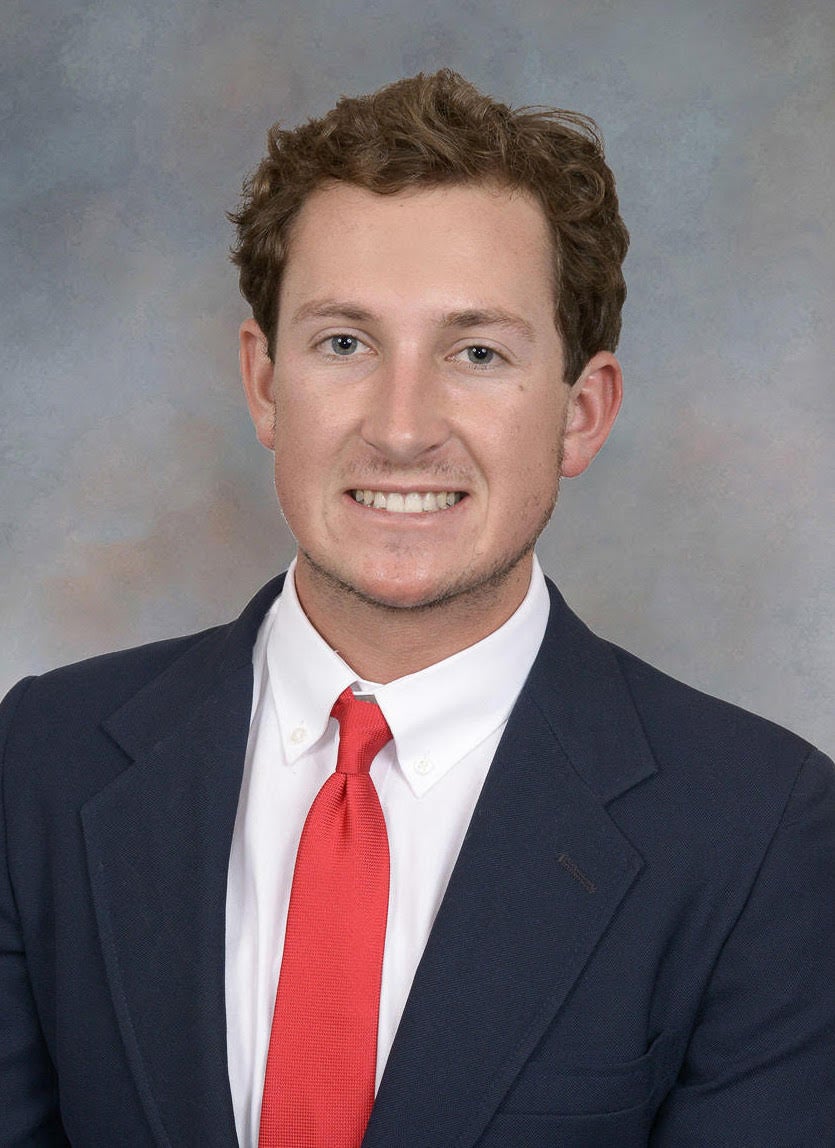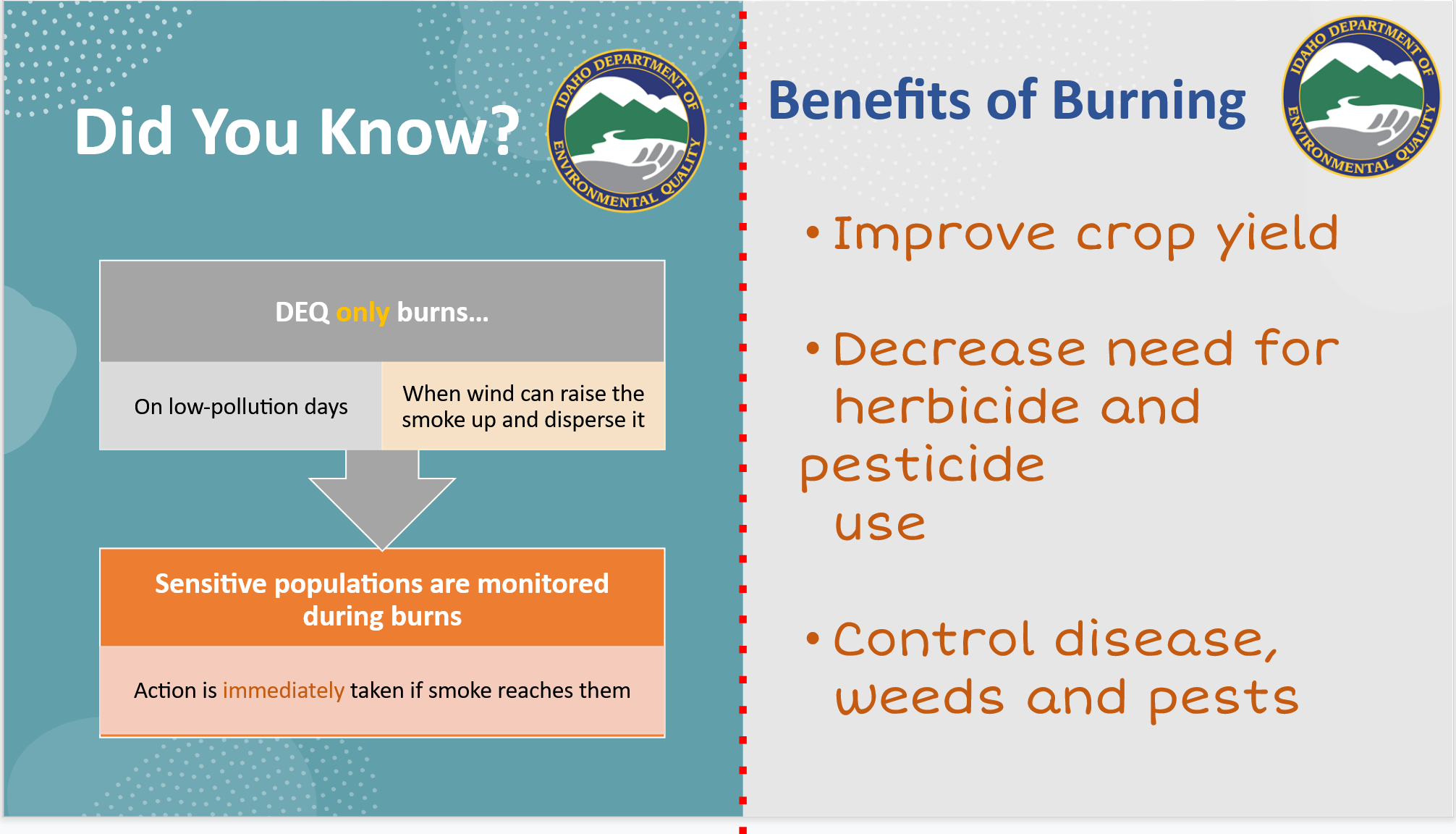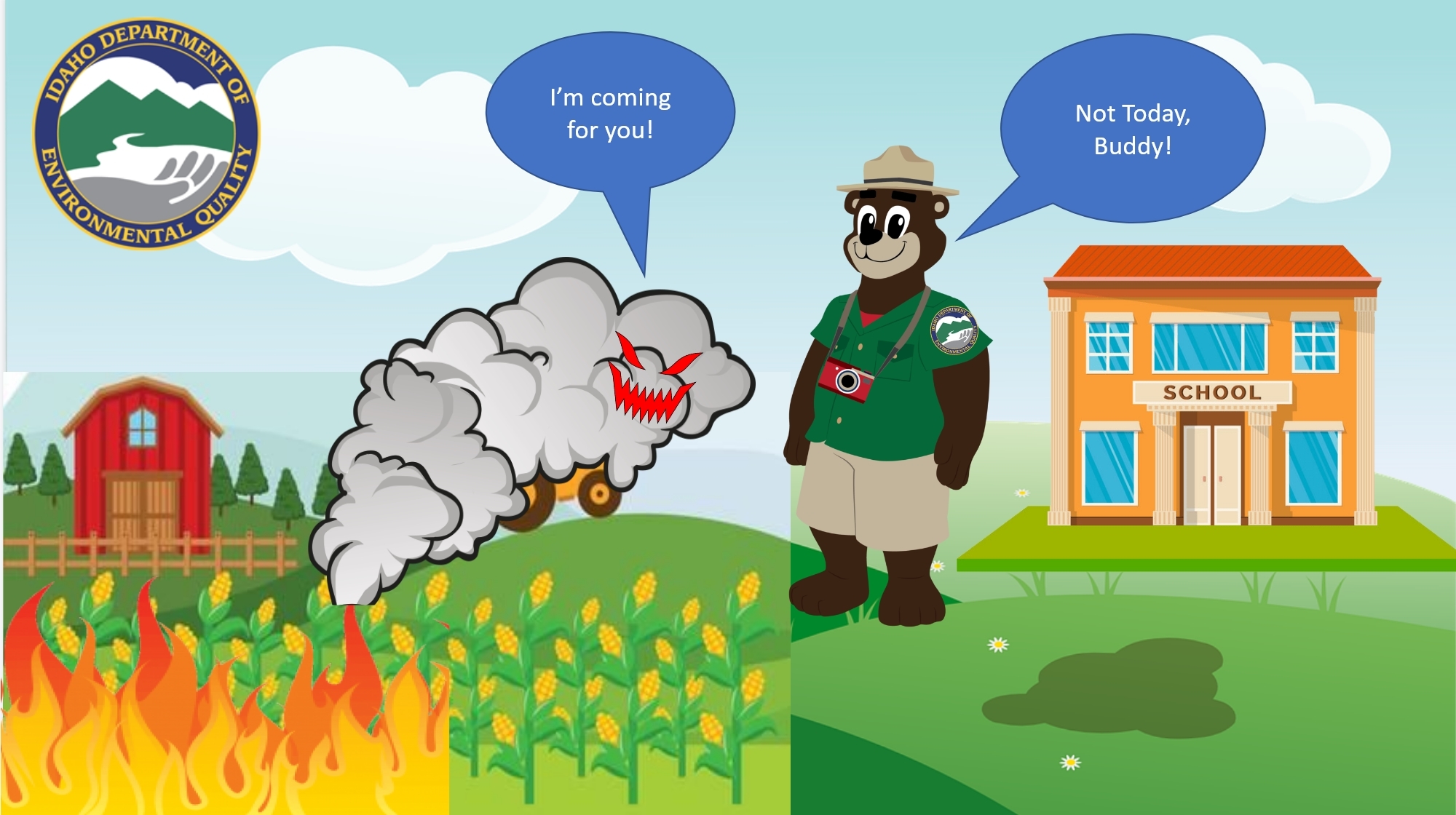Last spring, Public Health students in the Environmental and Occupational Health Sciences emphasis with the School of Public and Population Health took part in a project about controlled burning as part of EOHS 437: Indoor and Outdoor Air Quality Management.
The goal of the course was to help students better provide educational communications and outreach around public health. As part of that goal, students were tasked with creating educational outreach materials that would help inform the public on the logistics and regulations behind crop residue burning and would explain the relationship between air quality and Idahoan farming practices.
The students had to think about a variety of factors when planning their outreach strategies.
“A large portion of the project was planning out the message and how it would be conveyed to the audience,” said Grant Grichuhin, a student in the course. “I assumed our audience did not know much about the CRB program (just as I did before taking this class), so I wanted to ensure that the information was introductory and factual.”

Grichuhin, a recent graduate, said most people don’t know that farmers don’t choose when to burn — state governing authorities do.
“It was hard to convey the fact that, although smoke in the air is bad, there are days when the benefits of burning outweigh the consequences of smoke,” Grichuhin said.
To provide concise and accessible information, , the students focused on social media platforms to share their messages. They created informational slides that could be quickly posted online with links and QR codes that would offer more information for those interested.

The students then pitched their educational and outreach materials to community member Mark Boyle — the Smoke Management Supervisor for the Idaho Department of Environmental Quality (DEQ). The DEQ is responsible for regulating smoke emissions and granting permission to Idaho farmers for crop residue burning.
The students helped the DEQ think about how to be concise and accessible, Boyle said.
Boyle also said the use of images rather than text and QR codes stood out to him as a way to quickly and effectively convey information.
“The DEQ has been slowly transitioning into better use of social media platforms,” Boyle said. “The student presentations helped to move DEQ further in this direction.”

“Crafting a message that will resonate with Idahoans with limited exposure to air quality regulations or farming practices is critical for successfully securing engagement in the topic,” Boyle said.
The social media tactics pitched by EOHS 437 students are one way that message is growing.
Boyle said community members interested in crop residue burning and public health should follow DEQ online.
“The crop residue program provides an online application which tracks daily burn locations, approvals, weather forecasts and air quality conditions.”
For the students, this project helped put into perspective the complications and rewards that come with the dissemination of public health information.
Grachuhin’s biggest takeaway was better understanding how impractical it would be to completely stop smoke pollution in a state that relies so heavily on local agriculture.
Those who don’t know how the CRB program in Idaho works may just see smoke in the air and immediately assume it will have completely negative consequences.
“In reality, the DEQ has carefully selected days and times to burn —that way we are not causing risk to human life or the environment while still contributing to more efficient crop yield,” Grachuhin said. “It’s a win-win!”
Students interested in the Environmental and Occupational Health Sciences emphasis in the Public Health program can learn more here.